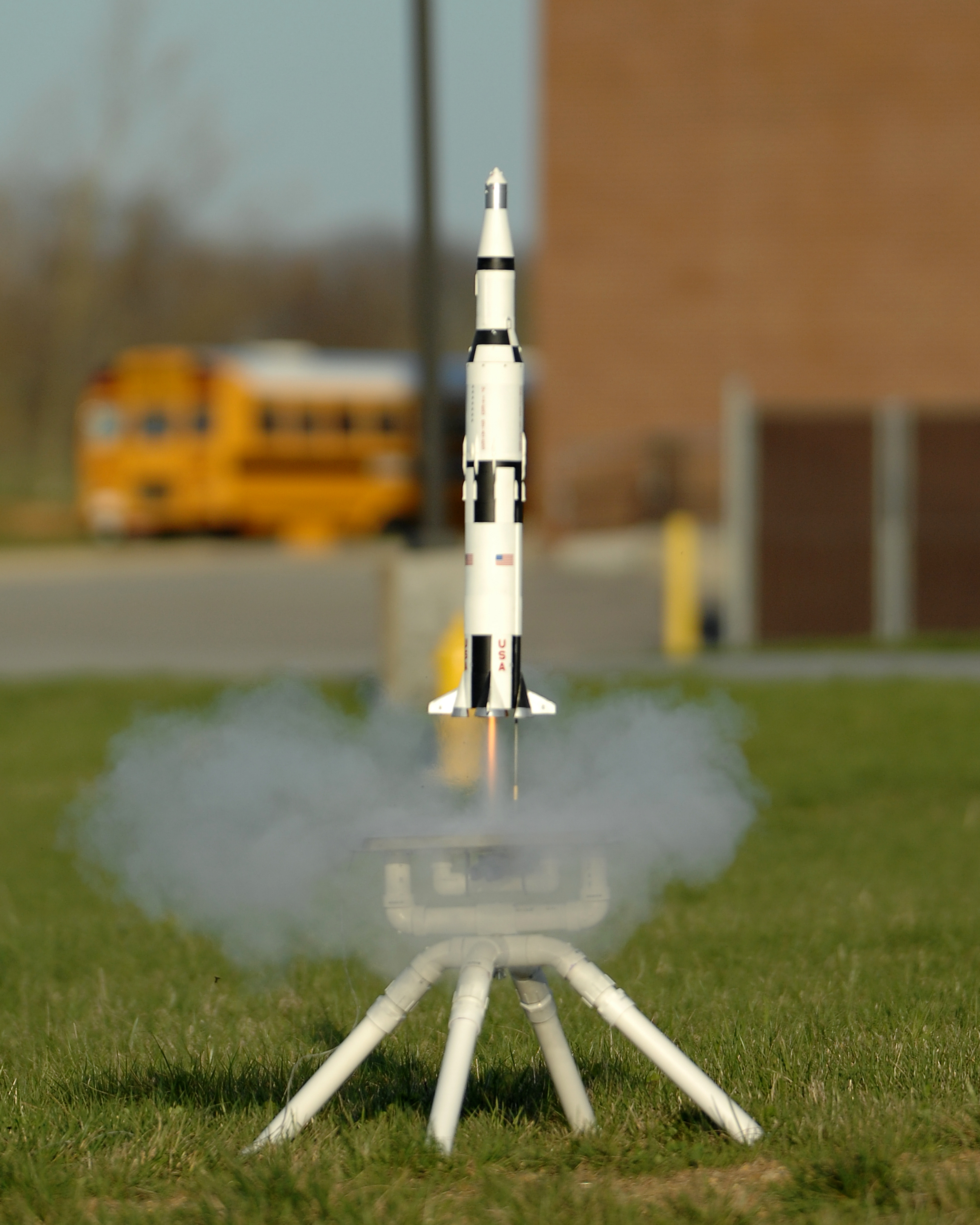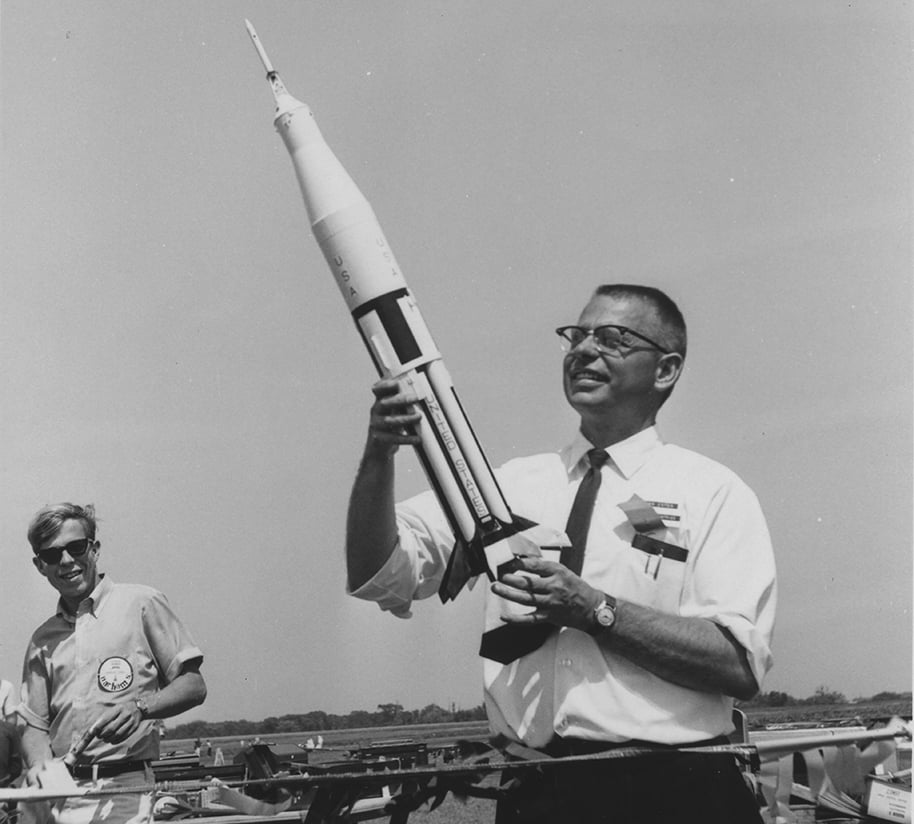![[G. Harry Stine with rocket]](https://vintageaviationnews.com/wp-content/uploads/GHStineUSA087_01-678x381.jpg)
In our youth, many among us surely experimented with model rockets, building and launching them, and staring up in wonder as they shot up into the sky, and (hopefully) came back down to earth safely when the parachute popped out. Many of those model rockets owe their genesis to G. Harry Stine, who was one of the founding fathers of the model rocket industry. This physicist started out his career working on actual rockets for the U.S. military and the space program during the 1950s and early 60s. But it is his pioneering endeavors with model rockets which cemented his place within rocketry lore. He was also a prolific author, of both science fiction (being great friends with the legendary Robert A. Heinlein), and model rocketry handbooks. Stine died in 1997, and much of his significant collection of documents and images related to aerospace and model rocketry are now housed at the Museum of Flight in Seattle, Washington. The museum has been cataloguing these archives over the past year or so, and has just announced (see below) that they are now fully searchable, and available for researchers and members of the public to delve into. We thought that some of our readers would find this both interesting and useful…
The Museum of Flight Announces New Online Access to Rocketry Archives
Images and research papers document evolution of model rocketry, early space age and aviation
SEATTLE, Nov. 6, 2019—The Museum has launched a major new online resource for images and research papers that document the growth of the model rocketry industry and other research and developments on rocketry in the latter half of the twentieth century. The “archival finding aid” is the result of a 14-month effort by the Museum organizing its vast collection of the personal papers, technical drawings and images of rocket engineer, aviator and early model rocket pioneer George Harry Stine, who was essential to the development of the model rocketry industry in the U.S. Stine’s collection, donated to the Museum in 2013, is one of the world’s largest collections of rocketry and associated materials. The finding aid is a significant roadmap to this collection and provides detailed information about its organization, the types of materials it contains and its subject matters.
Museum Senior Curator, Matthew Burchette, says “Although Harry Stine’s name may not be recognizable to most people, for some he’s known as the father of model rocketry, a technology writer, and a talented science fiction author. The Museum of Flight’s G. Harry Stine Collection is a treasure trove of archival materials that covers a diverse range of topics, including Boeing and early aviation. Stine enabled millions of kids around the world to enjoy the thrill of rocketry and ignited a passion in them for science and engineering that they developed into careers in the spaceflight industry.”

The new online finding aid also provides access to the Henri Coanda Archives, a rich resource covering early aeronautics and rocketry from 1914-1965.
The Museum’s Director of Collections Amy Heidrick says “one of the primary goals of the Museum’s Collections Department is to increase physical and digital access to our collection and make unique materials available to anyone from the professional historian to the casual enthusiast. With large collections like the Stine Collection, it is vital to have a detailed finding aid like this project has produced: it helps researchers identify what parts of the collection will be the most helpful to them.”
The G. Harry Stine Collection
The papers document the personal and professional career of Stine, as well as the founding of the National Association of Rocketry (NAR), the growth of the model rocketry industry, and other research and developments on rocketry in the latter half of the twentieth century. The collection has been organized in six series: I. Model Rocketry, 1957-2008; II. Writings, 1957-1994; III. Aeronautical Research Files, 1918-1994; IV. Personal and Other Professional Work, 1955-1997; V. Slides and Audiovisual Materials, 1946-1992; and VI. Henri Coanda Archives, 1914-1965.
The Archival Project and Access to the Collection
The project is being led by Supervisory Archivist Nicole Davis and dedicated Project Archivist Charise Michelsen, who has extensive experience working with large-scale collections of this kind. The $100,000 project is jointly funded by the NAR and The Museum of Flight via donations from both NAR and TMOF members and other interested people. The collection is comprised of three major components: objects (mostly model rockets, assembled and in kit form), library materials (books, periodicals, and newsletters), and archival materials (research files, correspondence, manuscripts, photographs, slides, and oversize materials such as blueprints and original scale drawings). Cataloging and preservation of the objects and library materials is still ongoing and will be completed in 2020.
To learn more about the Museum’s Collections and Research please see:https://www.museumofflight.org/Explore-The-Museum/Collections-and-Research
The archival finding aid is available online at:
https://archives.museumofflight.org/repositories/2/resources/268
To view materials from the collection, researchers can make an appointment to come to the Museum’s Dahlberg Research Center or request scans of items via www.museumofflight.org/Collections-and-Research/Research-Request



Be the first to comment
Graphic Design, Branding and Aviation Art